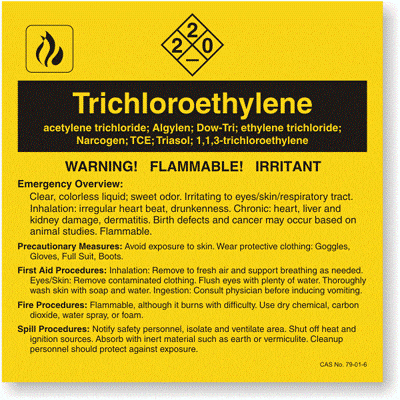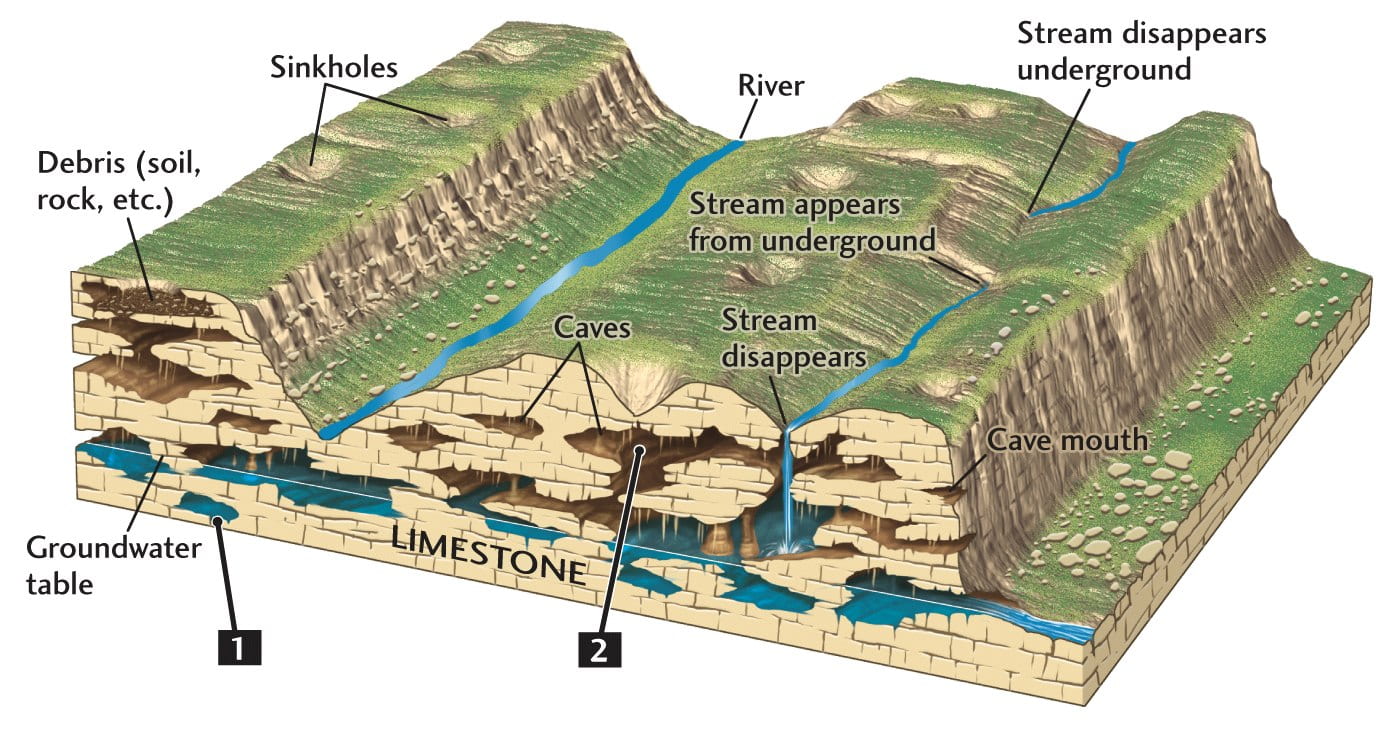PROTECT Project 4 has continued working to understand the ways in which contaminants move in karst aquifers, an effort that has taken the form of laboratory and field experiments as well as historical record evaluations. This year, laboratory models have shown that the transport of dissolved Trichloroethylene (TCE), a harmful chemical compound commonly used as an industrial solvent, through karst limestone is highly variable. At higher flow rates, the movement of dissolved TCE follows more localized flow paths and less TCE is left behind in the water due to the physical limitations of mass transfer (Carmona et al., 2016a)1.
Although flow patterns certainly influence the transport of TCE dissolved in groundwater, TCE distributions are much more associated with location of the source of the chemical compound. For example, TCE trapped as non-aqueous phase liquids (NAPLs) seem to display uniquely detrimental features when found in karst aquifers. PROTECT lab studies confirm findings that TCE NAPLs persist in karst aquifers for long periods of time, even when subject to high flow rates.

TCE Label
This information is important because karst aquifers are prevalent in most regions of the world, are vulnerable to contamination, are often used as drinking water sources, and are generally misunderstood by contamination-response groups. Attaining a deeper understanding about the way in which contaminants move through these aquifers may offer insight into better training practices for HAZMAT teams, firefighters, and other contamination responders working in karst regions.
PROTECT is committed to increasing awareness of this important area of environmental health. In 2016, with support from NIEHS, PROTECT co-organized with Karst Waters Institute, a conference on “Karst, Groundwater Contamination, & Public Health: Moving Beyond Case Studies.” PROTECT also hosted a webinar led by karst-expert Geary Schindel titled “Karst Aquifers – Water Quality, Vulnerability, and Public Health in a Complex Groundwater System.”

Project 4 works to understand the way in which contaminants flow through karst, groundwater systems that offer important freshwater resources for human consumption and ecological integrity.
PROTECT’s 2017 Check-In Series kicks off the new year with articles highlighting and reflecting upon the team’s accomplishments and findings since the center began, especially those that have come to fruition in the past year.
